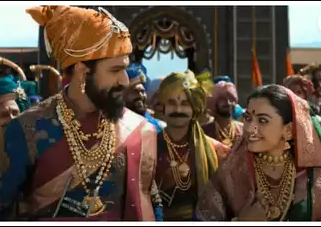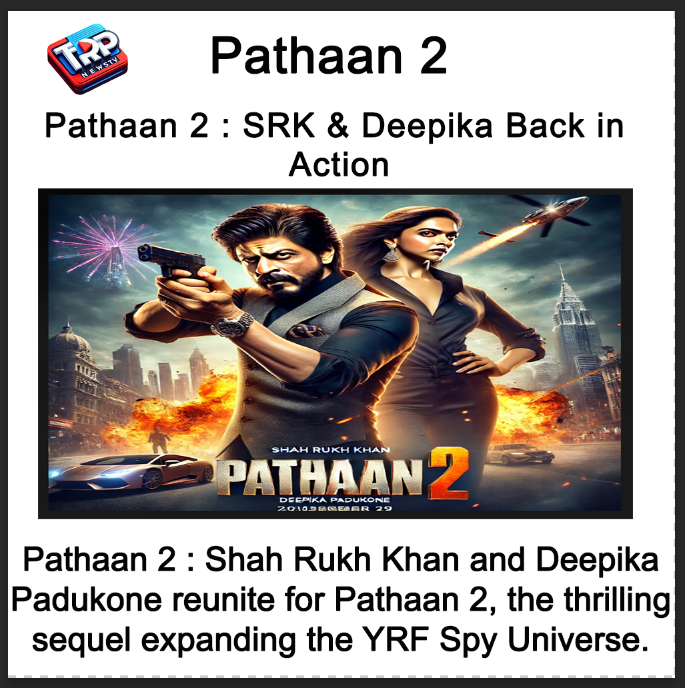
Vicky Kaushal and Rashmika Mandanna’s ‘Chhaava’ Dance Controversy: Historical Accuracy Sparks Backlash
Bollywood’s fusion of history and entertainment has long been a topic of debate, especially when artistic liberties collide with the demand for historical accuracy. The latest to spark such a controversy is the song “Chhaava” from an upcoming film featuring Vicky Kaushal and Rashmika Mandanna. What was intended as an energetic and captivating performance by the stars has become a focal point of criticism due to concerns over its historical authenticity.
The issue? The dance sequence featuring the Lezim dance, a popular Maharashtrian folk dance, has been removed from the final cut of the song after an outcry from various quarters regarding its accuracy and historical context. The Lezim dance, known for its vibrant movements and the rhythmic beat of a tambourine-like instrument, is deeply rooted in Maharashtrian culture. However, the sequence faced significant backlash, with critics questioning its appropriateness for the period and setting depicted in the film.
In this article, we’ll dive deeper into the controversy surrounding this dance number, explore the reasons behind its removal, and examine the broader conversation about historical accuracy in Bollywood films.
The Lezim Dance Controversy
The song “Chhaava”, which features Vicky Kaushal and Rashmika Mandanna, originally included a Lezim dance sequence. This traditional folk dance is often performed during celebrations or festive occasions, particularly in Maharashtra. Its energetic and lively nature makes it a popular choice for public performances. However, in the context of the film, the dance sparked controversy because it is widely considered to be from a later period than the historical setting of the movie.
The dance was deemed historically inaccurate for the era depicted in the film, with critics pointing out that such a dance form was unlikely to have been performed during that time period. The uproar centered on the idea that Bollywood often takes creative liberties with history, sometimes distorting it for entertainment purposes, and many felt this was an example of such an instance. While filmmakers often inject elements of fantasy, music, and dance to add flavor and appeal, the inclusion of a dance form that doesn’t align with the film’s historical framework raised questions about cultural representation.
The decision to remove the dance sequence came after mounting public pressure and backlash on social media. Many people, especially those with a keen interest in historical accuracy, expressed disappointment over the film’s attempt to mix modern-day cultural practices with a historical narrative. The filmmakers, in response, chose to address the criticism by removing the dance, signaling a shift towards prioritizing the preservation of historical integrity.
Cultural Sensitivity and Historical Accuracy in Bollywood
Bollywood films often walk a fine line between creativity and historical representation, particularly when depicting periods of great significance. While films based on historical events or figures are designed to entertain, they also have the responsibility to portray history with respect and accuracy. However, this doesn’t always happen, and it’s become clear that audiences are increasingly vocal about how history is represented on screen.
One of the key aspects of this controversy is the growing sensitivity towards cultural and historical authenticity. In an era where historical narratives are being reassessed, it’s not surprising that inaccuracies or misrepresentations can spark outrage. The public is increasingly holding filmmakers accountable for how they portray history, and with platforms like social media, it’s easier than ever for voices to be heard.
While filmmakers are free to take creative liberties to suit their narrative, there is also a rising expectation that they should respect cultural nuances. The issue with “Chhaava” lies not in the dance itself, but in the disconnect between the cultural practices shown and the time period the film is supposed to represent. The film was intended to showcase a specific historical context, and adding a folk dance that did not align with that context raised concerns about the accuracy of the portrayal.
The Role of Bollywood in Shaping Historical Narratives
Bollywood has long played a pivotal role in shaping public perceptions of history. The way historical figures, events, and cultural practices are depicted on screen often influences how they are understood by the general public. This is particularly true for films that are set in specific time periods or based on actual events. Films like Lagaan, Jodhaa Akbar, Bajirao Mastani, and Tumbbad have walked the line between historical accuracy and cinematic storytelling, and many have faced similar questions about how much creative freedom should be allowed.
In “Chhaava”, the filmmakers seemingly opted for a light-hearted, energetic number to engage the audience, but this decision has now led to a broader discussion about the role of historical accuracy in such films. When it comes to Bollywood, audience expectations are high, and it’s not always enough to merely entertain. There’s a growing demand for films to be both informative and respectful of the cultural and historical narratives they aim to portray.
Balancing Artistic Freedom and Responsibility
While Bollywood has long been associated with larger-than-life spectacle, elaborate dance routines, and vibrant music, there is also a responsibility to reflect the culture and history with integrity. The removal of the Lezim dance from “Chhaava” is a reminder that films set in a specific historical period should be mindful of the cultural elements they choose to include.
The challenge here is striking a balance between artistic freedom and historical responsibility. Dance and music are often used in films to heighten emotional moments, create visual appeal, and entertain the audience. However, when a historical narrative is involved, the inclusion of anachronistic elements, even ones as innocent as a folk dance, can disrupt the film’s authenticity.
Filmmakers often have to navigate this tension carefully, deciding how much of the past they want to adhere to while also creating an engaging cinematic experience. It’s important to remember that audiences want to be entertained but also educated and informed in the process, especially when a film claims to depict historical events.
Conclusion: The Future of Historical Representation in Bollywood
In conclusion, the removal of the Lezim dance from “Chhaava” marks an important moment in the ongoing discussion about historical accuracy in Bollywood films. While the filmmakers intended to entertain, the public response has made it clear that historical integrity is no longer something that can be overlooked.
As Bollywood continues to blend creativity with history, it will need to find ways to respect cultural traditions and historical accuracy while still providing the high entertainment value that its audiences expect. The future of historical representation in Bollywood depends on an evolving understanding of how best to balance both the entertainment and educational responsibilities of filmmaking.
In the end, films like “Chhaava” serve as a reminder of the importance of cultural sensitivity and the need for filmmakers to carefully consider how their creative choices impact the way history is perceived by the public. Whether the decision to remove the dance was the right one or not, the discussion around it is an important step in the ongoing evolution of Indian cinema.






